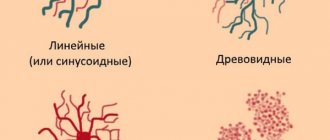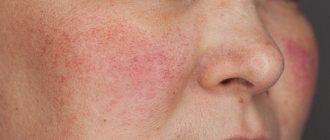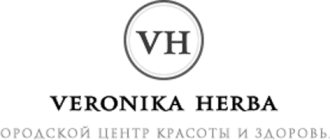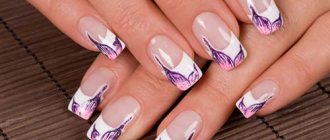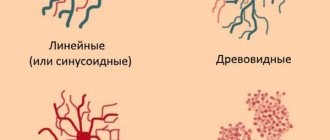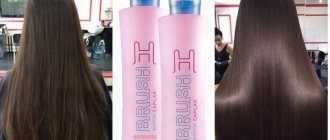A gentle blush and glowing skin are the result of self-care and good blood circulation on the face. But rosy cheeks are not always a sign of health. Unfortunately, sometimes unpleasant red dots and spider veins begin to appear on the skin. This is rosacea. It can appear all over the body. But such “stars” on the face (in fact, these are dilated blood vessels) worry us most of all. And then we turn to medical cosmetology to remove the capillary network on the face. This redness is caused by dilated blood vessels that extend almost to the surface of the skin. Most often, this pathology overtakes those with thin and delicate skin. They should be especially careful when carrying out many procedures, chemical peels and using strong scrubs. Sensitive skin reacts most acutely to such intervention. And besides this, such a vascular network on the face does not have the best effect on our perception of our own appearance.
Modern cosmetologists offer an effective means of combating the manifestations of rosacea, allowing you to restore a healthy natural glow and an even, fresh complexion. Removing blood vessels with a laser is a painless and safe way to get rid of spider veins.
In this article, we will study in detail what rosacea is, why it manifests itself, what methods besides laser therapy exist to remove it and achieve ideal skin, and is it easy to remove the vascular network on the face?
Laser removal of blood vessels for children
In children's clinics, lasers are used to eliminate congenital pathologies. Hemangioma is a benign tumor that looks like a birthmark. This is a vascular formation that disappears on its own by the first year of life, but not always. And then such education interferes with the full development of the child:
- Grows uncontrollably;
- Disfigures appearance;
- May lead to disability.
In difficult cases, surgery cannot be avoided. In the rest, due to the young age of the patient, non-invasive techniques are used. The cost of laser vessel removal in children is higher than in adults, but the price is justified by its high efficiency.
Cuperosis and vascular network on the face
As we mentioned earlier, this is a superficial manifestation of blood vessels on our skin. Many things can provoke this effect. An elementary increase in temperature, a contrasting transition after a winter street and frost into a warm room, excitement, stress or another reaction of the body when blood circulation increases and blood vessels lose their elasticity and expand. All this can appear on the surface of the skin in the form of unpleasant reddish “patterns”. They are often accompanied by side effects that further negatively affect the condition of the skin: the skin “burns” and dries, peeling and itching appear. Sometimes such irritation even leads to skin injury. All this is very sad and does not contribute to a good mood and confidence in one’s beauty.
Make an appointment at the clinic on Vasilyevsky Island
Sign up
Is it painful to remove blood vessels with a laser?
The pain of the procedure depends on:
- Individual sensitivity of the patient;
- Laser type and power;
- Areas of vessel location;
- Use during the cryo installation procedure;
- Vessel diameter.
Absolutely everyone experiences discomfort when blood vessels are removed. Typically, patients feel moderate discomfort, which manifests itself:
- Warmth;
- Tingling;
- Light burning sensation.
Some compare laser flashes to electric shocks. When eliminating superficial vessels, local anesthesia is usually not used. But it is often practiced when working with childhood hemangiomas. Up to the use of general anesthesia where complete immobility of the child is necessary.
Before contacting a cosmetologist
You should prepare for the procedure in advance. First of all, you should:
Avoid tanning
Preparation for laser correction of dilated vessels should begin one and a half months before the procedure. During this period, it is important to avoid sunlight.
The positive effect of a beam of laser beams when removing a vascular pattern is based on the difference in the color of the vessels and the color of the skin. After prolonged exposure to the sun or visiting a solarium, this difference decreases significantly, which can lead to excessive injury to the tissues surrounding the vessels. In addition, the specialist will be forced to reduce the force of the laser, which will lead to a decrease in the effectiveness of the procedure. If the tan is very strong, the doctor may postpone correction until the skin has completely recovered.
If possible, avoid exposure to UV rays or use sunscreen with SPF-50. If over the past month and a half you have been relaxing at sea or visiting a solarium, laser correction of enlarged blood vessels should be postponed.
Avoid skin injury
A few days before the procedure, you should not use aggressive skin care products or methods. Do not squeeze pimples, do chemical peels, or otherwise injure the skin.
Stop taking aspirin
2 weeks before laser correction of dilated vessels, you should not take aspirin, naprosyn, or a number of other pharmacological drugs. If you need a pain reliever, you can take thaleinol. You should consult a cosmetologist about taking any other medications.
In addition to the above, you should avoid drinking alcoholic beverages in the last days before the procedure.
Contraindications to laser vessel removal
Laser removal of blood vessels is contraindicated if:
- Irritation or damage to the treated area;
- Inflammatory processes;
- Dermatitis;
- Diseases of the endocrine or cardiovascular systems;
- Diabetes;
- Vasculitis;
- Epilepsy;
- Infectious diseases, including periods of exacerbation of chronic ones;
- Oncological problems;
- Predisposition to the formation of keloid scars.
Exposure to the laser may interfere with the functioning of the pacemaker. At the preliminary consultation, they will also clarify about taking medications.
Some of the drugs are incompatible with the procedure:
- Dilating vessels;
- Blood thinners;
- Iron-containing;
- Antispasmodics;
- Corticosteroids (hormonal);
- Photosensitizing drugs;
- Retinoids, etc.
Contraindications include fresh tanning, peelings and any traumatic procedures. In such cases, it is better to postpone therapy until the skin is completely restored.
Post-procedure care
General recommendations during the recovery period:
- Immediately after laser star removal, it is recommended to apply ice packs to the treated areas.
- Use antibacterial ointment for the first few days.
- Do not wet the treated areas for 3 days.
- Do not use decorative cosmetics for 3 days.
- Protect skin from exposure to sunlight for 2-3 months.
- Do not peel off the crusts. Picking promotes the formation of scars.
- Avoid physical activity.
How much does laser blood vessel removal cost?
The decisive price for laser vascular removal depends on the following factors:
- Localization and size of the problem area;
- Depth and severity of capillaries;
- Laser type;
- Prestige of the clinic;
- Doctor's experience.
The number of sessions also affects the total cost. Often a visible result appears after a single procedure, and if necessary, the problem is corrected by a second visit to a specialist.
In cases with rosacea or rosacea, the patient needs a long course - from 3 to 10 procedures with an interval of 2 to 4 weeks.
Average price for the service in clinics in Moscow and Moscow Region:
- Face - 6,000 rubles;
- Neckline—5600 RUR;
- Eyes - 10,000 rubles;
- Legs - 12,000 rubles;
- Hands - 7,000 rubles;
- Face, neck and décolleté — 8,600 rubles;
- 1 cm 2 - 1000 rub.
On average, the procedure for removing a spider vein with a diameter of 1.5 mm costs about 1,000 rubles. The cost of one flash unit can range from 100 to 1000 rubles.
How to remove capillary mesh on the face with maximum effect
Firstly , any doctor will tell you that one procedure will not be enough. And the point is not at all that the “stars” will not disappear the first time. You will see positive results after the first session. Depending on the intensity of rosacea, skin sensitivity, and individual characteristics of the body, you may be prescribed not one manipulation, but several. Even when you seem to have already gotten rid of the line of blood vessels appearing on your face, you will be advised to repeat the sessions after some time to consolidate the effect. The duration of the procedure is only a few minutes; you can first do a gentle peeling to remove excess epidermal cells and the fatty layer. A repeat session will be scheduled for you no earlier than in 3-4 months.
Is it possible to get rid of blood vessels forever?
Under the influence of various aggressive factors (frequent visits to baths and saunas, excessive alcohol consumption, harsh weather conditions - extreme heat, cold, stress) - due to increased pressure in the vascular bed, neighboring vessels may begin to appear again. Unfortunately, cosmetology does not fight the cause of blood vessels, but only the aesthetic manifestations. The cause of the appearance of blood vessels on the face is identified by other specialists, and sometimes it can be very difficult to find and eliminate it. Even in this case, the vessels do not disappear on their own, and the patient in this case also turns to a cosmetologist.
Questions from patients about the procedure of microsclerotherapy (removal) of spider veins
How much does modern microsclerotherapy for spider veins cost in Moscow?
A session of modern microsclerotherapy for spider veins in our Moscow city center costs 8 thousand rubles. You can find out more detailed information about the cost of treatment by phone or on our website page:.
Where is the best place to do microsclerotherapy for spider veins in Moscow?
Microsclerotherapy of spider veins in Moscow is best performed in a good city phlebology center, where they work according to modern European standards.
Is microsclerotherapy for telangiectasia and reticular veins performed simultaneously in Moscow?
Simultaneous microsclerotherapy sessions for telangiectasia and reticular veins are performed in the best Moscow clinics. This is a good procedure for quickly eliminating unsightly venous vessels.
Where can I read reviews about microsclerotherapy for spider veins and reticular veins?
Reviews from patients about microsclerotherapy for spider veins and reticular veins at the city phlebological center can be read on our website page: .
A good modern sclerosant, as it should be
A good modern sclerosant should have the following properties:
- The substance must not be toxic to the human body
- The sclerosing effect should be caused only by a strictly defined concentration of the drug, subject to prolonged contact with the vein wall
- No allergic reactions to sclerosant
- The drug must have the necessary strength to obliterate sufficiently large vessels, and be safe in case of extravasation (going beyond the boundaries of the vessel)
- The drug should not cause scarring or skin pigmentation effects
- No pain effect on drug administration
- The sclerosant must have good solubility in physiological solution.
What is microsclerotherapy (removal) of telangiectasia (spider veins)?
Microsclerotherapy of telangiectasia (spider veins) is a modern cosmetic procedure aimed at removing small-diameter venous vessels by introducing substances (sclerosants) specially developed for this purpose into their lumen. The technique is based on the effect of a chemical burn of the inner wall of the asterisk with subsequent fibrosis of the vessel.
Microsclerotherapy procedure for telangiectasis
The microsclerotherapy procedure for telangiectasia is the “gold standard” for the removal of these vascular formations that arise from persistent dilatation of the smallest veins. This state of affairs is associated with a high aesthetic effect, safety and good tolerability of microsclerotherapy for telangiectasia.
What is telangiectasia (spider veins)
Telangiectasia (spider veins) is a persistent dilation of the smallest vessels of the skin: venules, arterioles and capillaries. The dilations of the smallest arteries rarely exceed a diameter of 0.2 mm and are predominantly red in color. These are red telangiectasia. To remove them, methods based on physical influence are used: radiofrequency and laser percutaneous exposure.
Types of spider veins
The clinical significance of telangiectasia is still discussed by leading European phlebologists. However, the contribution of telangiectasia to the development of symptoms of chronic venous insufficiency is rather exaggerated. The leading clinical significance of telangiectasia is a pronounced cosmetic defect. The so-called “blue” telangiectasias are dilated venules. It is these formations that are the leading reason for turning to an aesthetic phlebologist.
Types of modern sclerosants
All modern sclerosants can belong to one of the following groups:
- Detergent preparations. The chemical structure of these substances is based on fatty acids or alcohols. The mechanism of their action is based on the extraction of protein molecules from the surface membrane of the endothelial cell of venous vessels, the cell is irreversibly damaged and dies. This effect works only in the range of a certain sclerosant concentration, below which there is no effect on vascular cells. This group is represented by the following drugs:
- Ethoxysclerol (Polidocanol).
- Sodium tetradecyl sulfate (fiberwein).
Everything is ready for microsclerotherapy
In addition to these drugs, the following detergents are also used in the world: sodium morruate, ethanolamine oleate, glycerin.
- Cell toxin preparations are used by some specialists for sclerosis of vascular formations.
- Hypertonic and ionic solutions. Modern European phlebologists also use the following sclerosants of this group:
- Hypertonic sodium chloride solution (20 and 23.4% solutions).
- Sclerodex (a combination of a solution of 25% glucose and 10% sodium chloride).
- Ionized iodine preparations (variglobin, sclerodin).
- 75% glucose solution.
In Russia today only drugs from the detergent group are approved for use: polidocanol (ethoxysclerol) and tetradecyl sulfate (fiberwein). The issue of admitting 75% glucose solution into medical phlebological practice is being actively resolved.
Prices:
Laser treatment of vascular pathology
| Removal of capillary hemangiomas on the body: | ||
| 1 mm | 100 rub. | |
| 2 mm | 300 rub. | |
| Removal of hemangioma on the face with a vascular laser | 1,000 rub. | |
| Cheek (one) | 6,000 rub. | |
| Nose wings (both sides) | 1,500 rub. | |
| Full nose | 3,000 rub. | |
| Chin | 3,000 rub. | |
| Single vessel (1 cm) | 1,000 rub. | |
| Local area (1 cm2) | 1,500 rub. | |
How is the microsclerotherapy procedure performed in a modern phlebological center in Moscow?
In our phlebological center, we use some of the best thinnest needles with laser sharpening of 27-30 G. Using these tools, skin punctures are made that are practically not felt by patients. The procedure is performed by an experienced phlebologist, who has not only thousands of procedures under his belt, but also a significant number of master classes on this technology.
Master class performed by phlebologist Semenov A.Yu. on microsclerotherapy
Sessions are carried out with the patient in a horizontal position. After puncturing the skin, the tip of the needle enters the vessel, the specialist slowly and carefully injects the drug, making sure that the vein does not overstretch and rupture.
After the session, sterile bandages are applied and compression stockings are put on. The patient is recommended to take a half-hour walk.
Cosmetic microsclerotherapy (microscleroobliteration) at the Moscow Phlebology Center
The microsclerotherapy method is deservedly called the “gold standard” for the removal of telangiectasia. Due to its minimal invasiveness, good patient tolerance and good clinical effect, the microsclerotherapy technique has taken its rightful place in modern phlebological practice. Cosmetic microsclerotherapy at the Moscow City Phlebological Center is performed by some of the best phlebologists in Moscow and Russia according to the most modern European standards.
Microsclerotherapy performed by phlebologist of the MIFC Raskin V.V.
We use the most advanced technologies to achieve not only a good clinical effect, but also the best aesthetic result.
